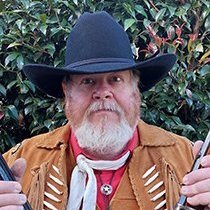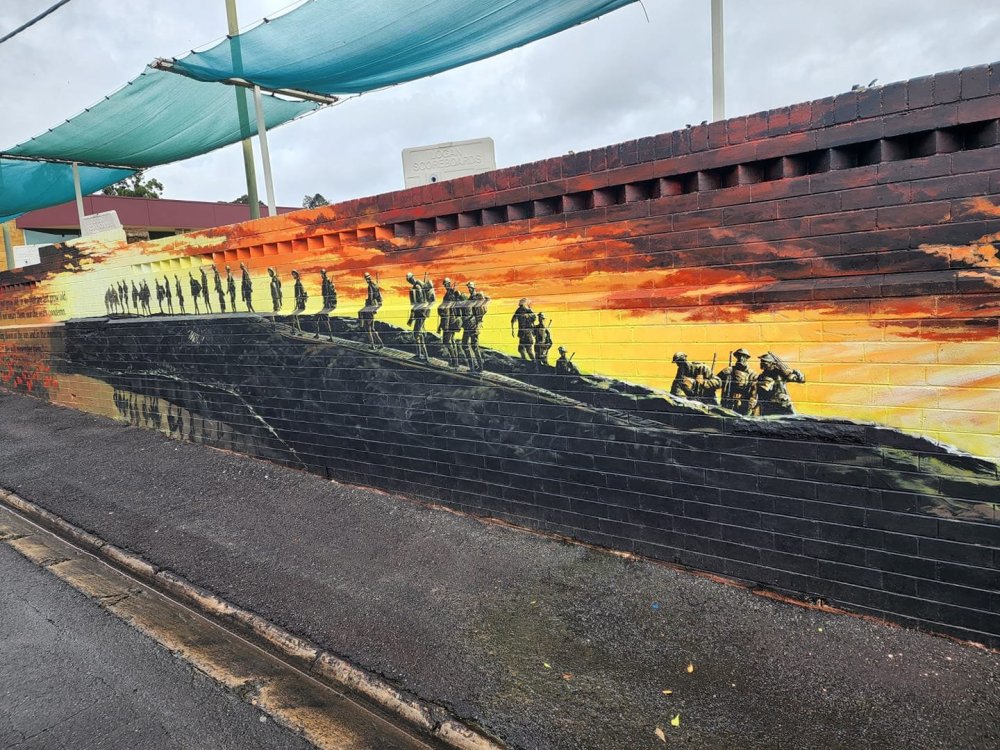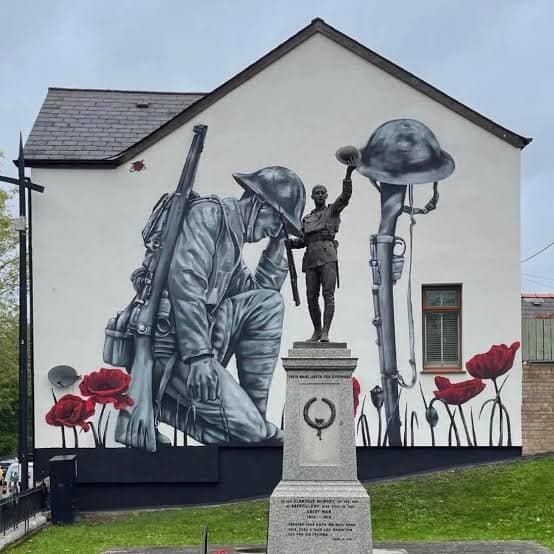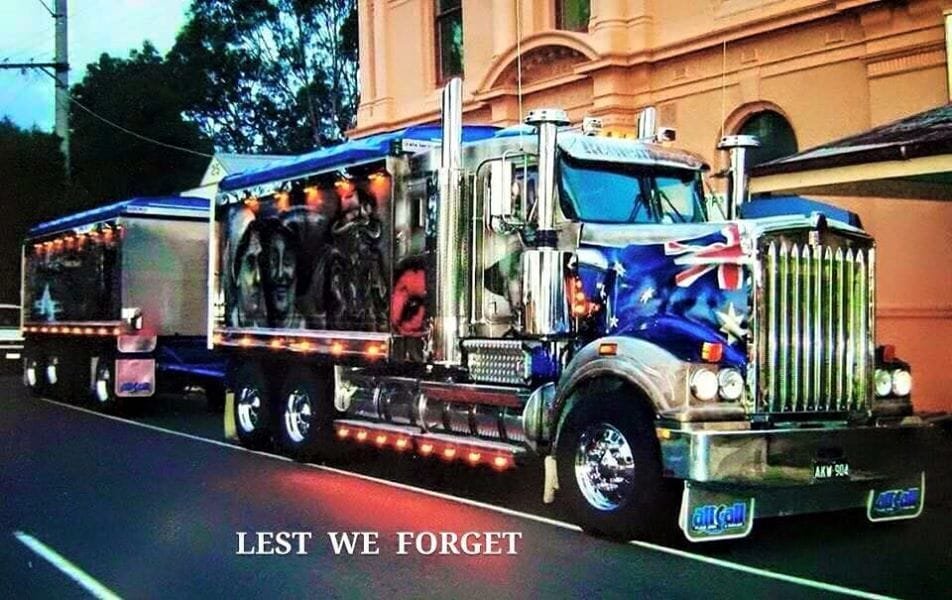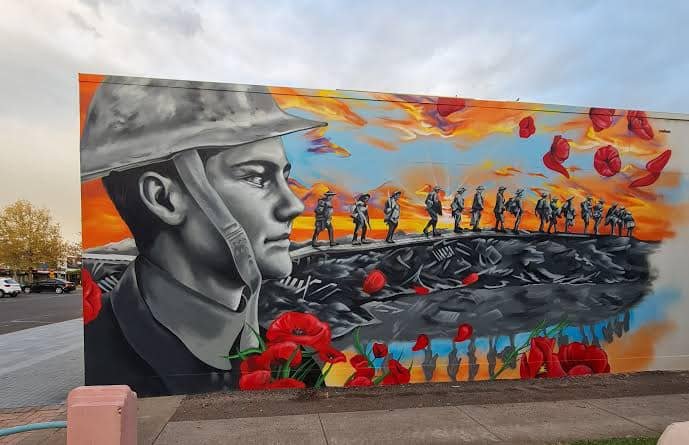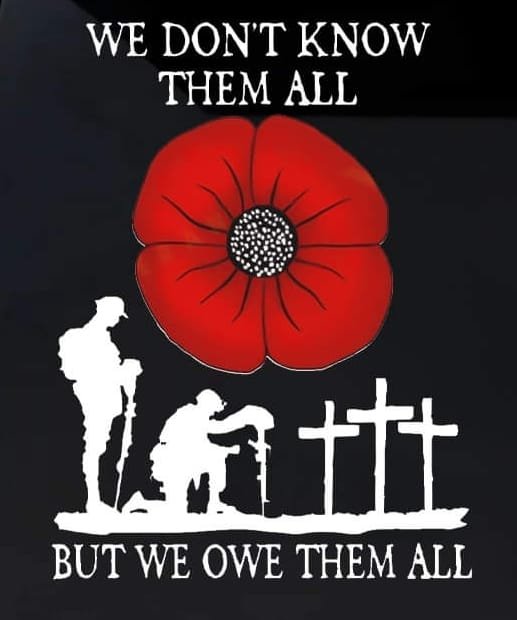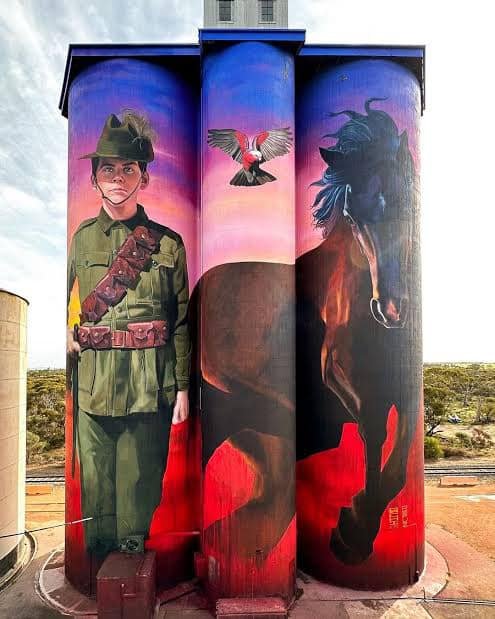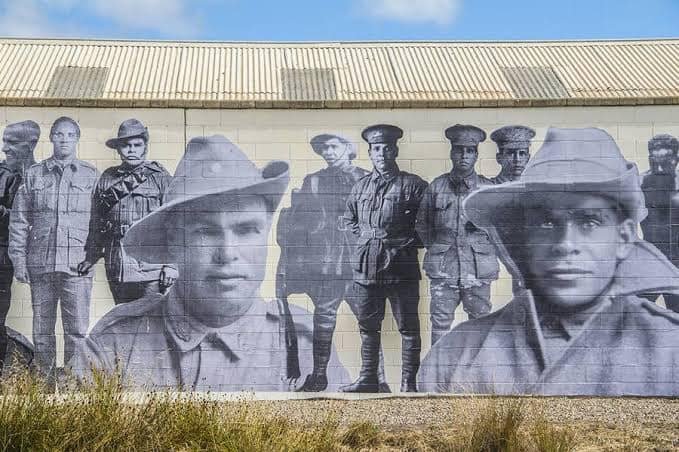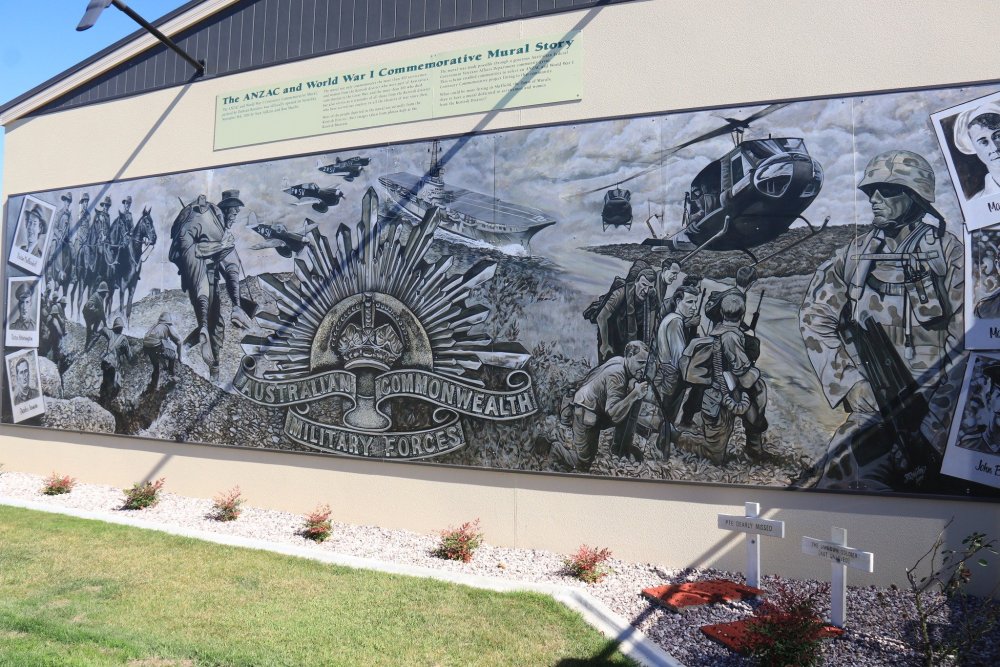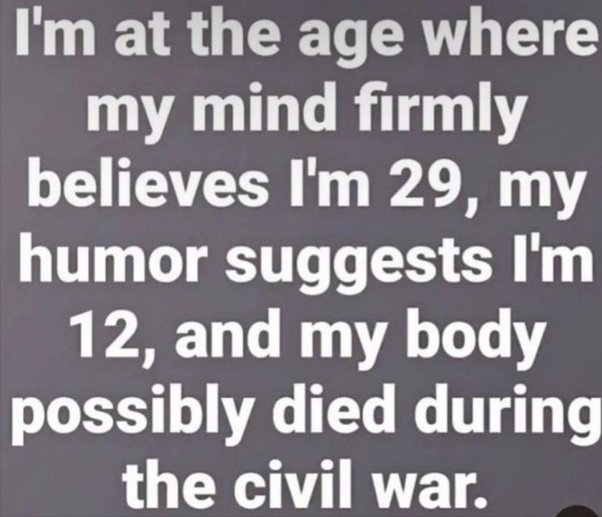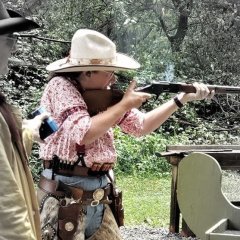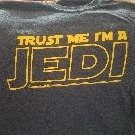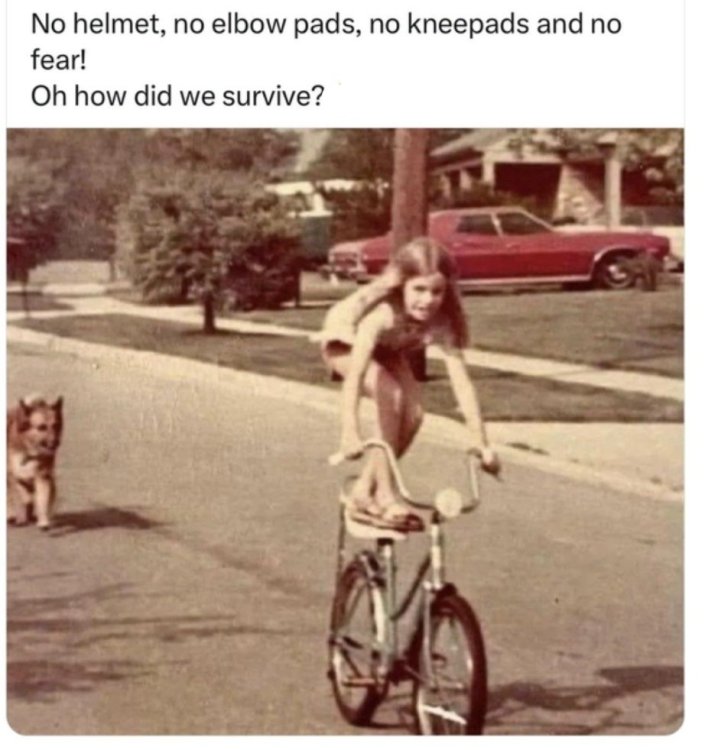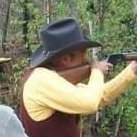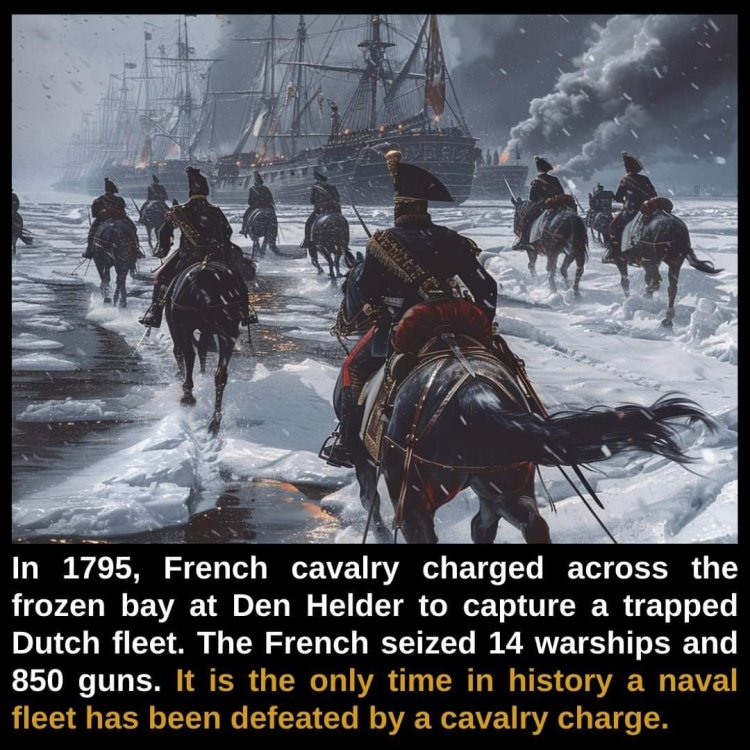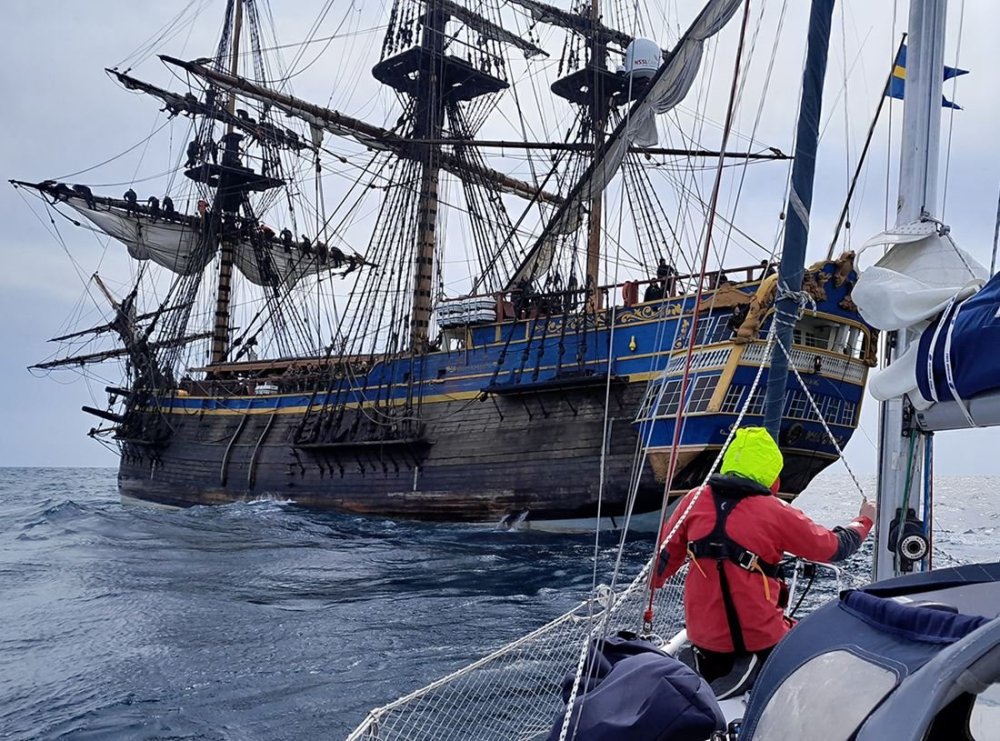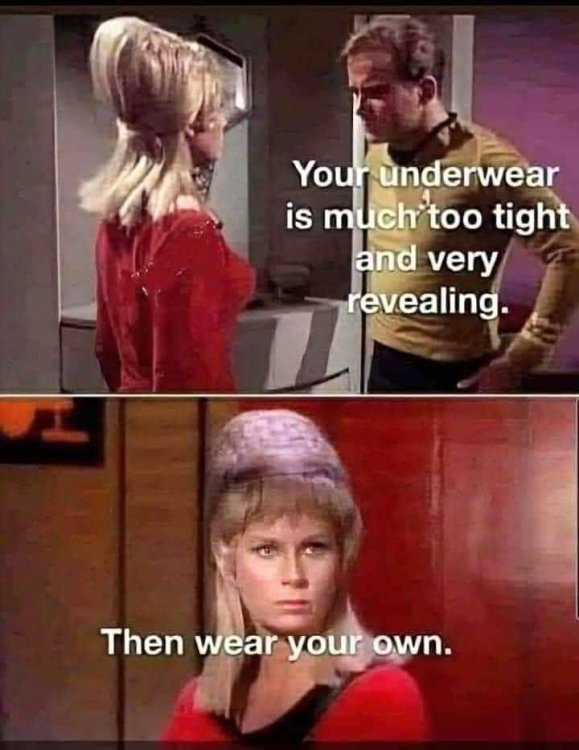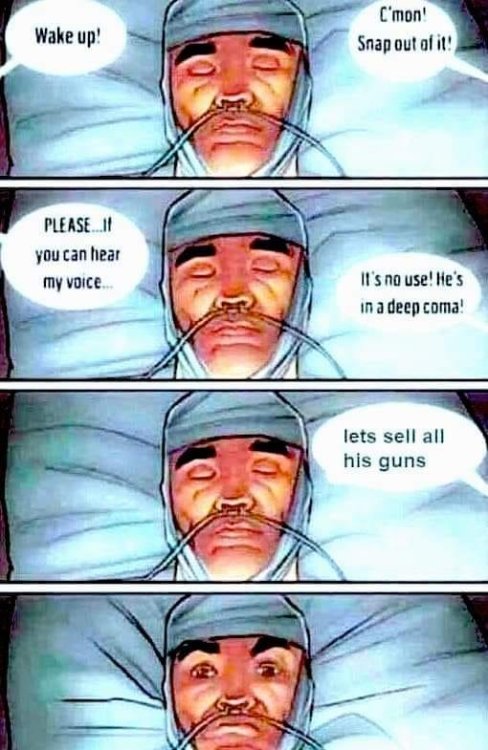Leaderboard
The search index is currently processing. Leaderboard results may not be complete.
Popular Content
Showing content with the highest reputation since 04/19/2024 in all areas
-
shooter's handbook, page 21 "5-SECOND PENALTIES Misses are 5-Second penalties. Revolver, rifle, and shotgun targets must be engaged with the appropriate type of firearm. A MISS is defined as the failure to hit the appropriate target type using the appropriate type of firearm and includes: - Each missed target. - Each unfired round. ... Double Jeopardy applies- a miss cannot cause a procedural." A miss for the unfired round. No "P" --Dawg18 points
-
My wife started this some long time ago with intent to have it finished by my birthday. It's a little late but I am sitting here just plainly devouring it with my eyes! She ordered a plastic model and spent an unholy amount of time and effort (and holding her breath!) to detail this to her satisfaction!16 points
-
I may have mentioned two of my great grandfathers who were Confederate soldiers. One was scour for General Sterling Price and the other signed up and was on his way with a few others to get uniforms weapons, and cetera when a Yankee patrol captured them and he spent the rest of the war in a POW camp in Michigan. Well, I recently was given some of Mom's papers that my sister had ever since Mom passed. Sis didn't know, nor did she much care, what they were. Four eight and a half by fourteen photo copies of pay records for Private Robert C. Owens (My grandmothers uncle and brother to the one who was a scout) of Captain Landis' Company, of Light Artillery, CSA. There are four pay records per page and start on December 8, 1862. There are some gaps because the next one, dated July (can't read the day) 1862. Skip ahead and he is on the Roll of Prisoners of War, captured at Vicksburg on July 4, 1863 and now living at Camp Morton, Indiana. He was released January3, 1865 after refusing for the entire time he was a prisoner to accept parole and finally taking the oath of allegiance to the Union at Camp Morton, Illinois. He was released at Gratiot Street Prison, Saint Louis, Missouri. He was described as dark complexion with brown hair and black eyes, standing 5'7 3/4" tall. One more brick in the wall.15 points
-
I have been shooting open tops for the last few years (I have 6, pairs in 3 calibers) so I have forsaken Top breaks. Well, I work part time in a local gun shop, and guess what came in? A Uberti No. 3, 1st Model "American" 5" top break in .44 Spcl/Russian! It had been back ordered several years ago, apparently, but there is no longer any record of who ordered it, nor was there a deposit paid. Boss knew I like cowboy guns, and offered it to me, to work off with shifts! I said "hell yes!". I liked it so much, I contacted Cimarron and arranged to get an 8" in the same caliber. I ow have a pair. They go great with my 1860 Henry and hammered double. I used them at a local match last week end and loved them. I am loading a 246 grain, conical round nose lead .44 Russian bullets over 5.3 grains of Unique in a Starline .44 Russian case. Pretty much dead on at 7 yards.12 points
-
Launched in 1977, it’s now 15 billion miles from earth. It took 5 months to fix a glitch in its computers. Think about that, the computers aboard are over 47 years old, and the engineers communicate with it using 1977 computers and their ancient language from earth. A stunning achievement! https://abcnews.go.com/amp/Technology/nasa-voyager-1-spacecraft-sending-readable-data-back-earth/story?id=10957298312 points
-
12 points
-
The TO should not have stopped the shooter. The shooter should have gotten a reshoot. The only penalty that carries over is a safety. Good lord.12 points
-
12 points
-
Shooter should have declared the malfunction and safely grounded the revolver. TO should have waited until the end of the stage to verify the position of the unfired round in the cylinder (SDQ if under the hammer). If the TO had simply advised the shooter to safely stage the revolver instead of reholstering it, THAT would have been considered "proper coaching" to avoid the possibilty of a SDQ = No RESHOOT. Shooter should have appealed the miscall up the chain of command & received a RESHOOT for RO interference: SHB p.2011 points
-
11 points
-
11 points
-
This world is full of blathering morons with too thin skin and not enough intelligence to focus on anything but minutiae.11 points
-
11 points
-
Drank water from a garden hose, ate raw veggies and fruits that we took right from the plants, played with BB guns, lawn darts and other other evil toys, climbed on Jungle Gyms and overhead ladders, used tether balls and hanging chains, roller skates, pogo sticks, home made stilts, played dodge ball, swam in irrigation canals down stream from pastures and feed lots, hitch hiked all over the country, made swings out of old tires and rope, build soap box cars with roller skate wheels, shot arrows in our back yards, used home made sling shots made out of forked sticks and inner tubes, played mumble peg with real knives, never heard of seat belts............and much more. We survived and many of us grew up without much illness or injuries. Now we live in an over-protective society and all this is gone. Kids don't have adventures any more, they have computer games and cell phones. Very sad.11 points
-
11 points
-
10 points
-
10 points
-
Annie Oakley was the fifth of seven surviving children, Oakley was born Phoebe Ann Moses on August 13, 1860, in rural Darke County, Ohio. Although she became a Wild West folk hero, the sharpshooter spent her entire childhood in the Buckeye State. Called “Annie” by her sisters, she reportedly chose Oakley as her professional surname after the name of an Ohio town near her home. Eight years after the Battle of the Little Bighorn, the Lakota Sioux leader who orchestrated the defeat of General George Custer’s troops attended one of Oakley’s performances in St. Paul, Minnesota, in March 1884. Mesmerized by her marksmanship, the Native American chief sent $65 to her hotel in order to get an autographed photograph. “I sent him back his money and a photograph, with my love, and a message to say I would call the following morning,” Oakley recalled. “The old man was so pleased with me, he insisted upon adopting me, and I was then and there christened ‘Watanya Cicilla,’ or ‘Little Sure Shot.’” In addition to a nickname that followed Oakley the rest of her life, Sitting Bull also reportedly gave her a pair of moccasins that he had worn at Little Bighorn. The two became even closer friends the following year when Sitting Bull joined Buffalo Bill’s Wild West show for a four month stint. “He is a dear, faithful, old friend, and I’ve great respect and affection for him,” Oakley wrote of Sitting Bull.10 points
-
I generally remove the primers when doing rifle cases. I have not gone to that trouble for pistol brass. So far no stuck primers. And you really don't want to wet tumble with the new primers in place.10 points
-
On April 18, 1942, 16 American B-25 bombers, launched from the aircraft carrier USS Hornet 650 miles east of Japan and commanded by Lieutenant Colonel James H. Doolittle, attack the Japanese mainland. The now-famous Tokyo Raid did little real damage to Japan (wartime Premier Hideki Tojo was inspecting military bases during the raid; one B-25 came so close, Tojo could see the pilot, though the American bomber never fired a shot)—but it did hurt the Japanese government’s prestige. Believing the air raid had been launched from Midway Island, approval was given to Admiral Isoroku Yamamoto’s plans for an attack on Midway—which would also damage Japanese “prestige.” Doolittle eventually received the Medal of Honor Conceived in January 1942 in the wake of the devastating Japanese surprise attack on Pearl Harbor, the “joint Army-Navy bombing project” was to bomb Japanese industrial centers, to inflict both “material and psychological” damage upon the enemy. Planners hoped that the former would include the destruction of specific targets “with ensuing confusion and retardation of production.” Those who planned the attacks on the Japanese homeland hoped to induce the enemy to recall “combat equipment from other theaters for home defense,” and incite a “fear complex in Japan.” Additionally, it was hoped that the prosecution of the raid would improve the United States’ relationships with its allies and receive a “favorable reaction [on the part] of the American people.”. Originally, the concept called for the use of U.S. Army Air Force bombers to be launched from, and recovered by, an aircraft carrier. Research disclosed the North American B-25 Mitchell to be “best suited to the purpose,” the Martin B-26 Marauder possessing unsuitable handling characteristics and the Douglas B-23 Dragon having too great a wingspan to be comfortably operated from a carrier deck. Tests off the aircraft carrier Hornet (CV-8) off Norfolk, and ashore at Norfolk soon proved that although a B-25 could take off with comparative ease, “landing back on again would be extremely difficult.” The attack planners decided upon a carrier transporting the B-25s to a point east of Tokyo, whereupon it would launch one pathfinder to proceed ahead and drop incendiaries to blaze a trail for the other bombers that would follow. The planes would then proceed to either the east coast of China or to Vladivostok in the Soviet Union. However, Soviet reluctance to allow the use of Vladivostok as a terminus and the Stalin regime’s unwillingness to its neutrality with Japan compelled the selection of Chinese landing sites. At a secret conference at San Francisco, Lieutenant Colonel James H. Doolittle, USAAF, who would lead the attack personally, met with Vice Admiral William F. Halsey, Jr., who would command the task force that would take Doolittle’s aircraft to the very gates of the Japanese empire. They agreed upon a launch point some 600 miles due east from Tokyo, but, if discovered, Task Force 16 (TF-16) would launch planes at the respective point and retire. Twenty-four planes drawn from the USAAF's 17th Bombardment Group were prepared for the mission, with additional fuel tanks installed and “certain unnecessary equipment” removed. Intensive training began in early March 1942 with crews who had volunteered for a mission that would be “extremely hazardous, would require a high degree of skill and would be of great value to our defense effort.” Crews practiced intensive cross-country flying, night flying, and navigation, as well as “low altitude approaches to bombing targets, rapid bombing and evasive action.”10 points
-
10 points
-
On 19 April 1943, a train carrying 1,631 Jews set off from a Nazi detention camp in Belgium for the gas chambers of Auschwitz. But resistance fighters stopped the train. One boy who jumped to freedom that night retains vivid memories, 70 years later. . In February 1943, 11-year-old Simon Gronowski was sitting down for breakfast with his mother and sister in their Brussels hiding place when two Gestapo agents burst in. They were taken to the Nazis' notorious headquarters on the prestigious Avenue Louise, used as a prison for Jews and torture chamber for members of the resistance. From there, Simon and his mother and sister were transferred to the Kazerne Dossin, a detention camp 30 miles away in Mechelen, Flanders, they were deported to Auschwitz on the 19th April. Soon after leaving Mechelen, the 20th convoy was attacked by three young members of the Belgian Resistance armed with one pistol, red paper and a lantern. They made a red light, a sign for danger ahead, forcing the train driver to brake sharply. This was the first and only time during World War II that any Nazi transport carrying Jewish deportees was stopped. Robert Maistriau, one of the resistance members, recalled that terrifying moment later in his memoirs. "The brakes made a hellish noise and at first I was petrified. But then I gave myself a jolt on the basis that if you have started something you should go through with it. I held my torch in my left hand and with my right, I had to busy myself with the pliers. I was very excited and it took far too long until I had cut through the wire that secured the bolts of the sliding door. I shone my torch into the carriage and pale and frightened faces stared back at me. I shouted Sortez Sortez! and then Schnell Schnell flehen Sie! Quick, Quick, get out of here!" After a brief shooting battle between the German train guards and the three Resistance members, the train started again. Some had escaped from the opened wagon and the mood among the remaining deportees had changed. Those who had dreamed of escape suddenly become more determined and more desperate. A policeman, Jan Aerts had guessed Simon came from the Auschwitz convoy. The bodies of three escapees were lying in the police station at that very moment. However, Aerts had no intention of betraying Simon. His wife fed him and gave him clean clothes. Aerts arranged for Simon to catch a train back to Brussels where he arrived that evening. Simon was reunited that night with his father, a shopkeeper, although they spent the remaining years of the war hidden separately by Catholic families. The 20th convoy was unique in that there was an attempt to rescue the deportees. It was unique in being the only convoy from which there was what could be called a mass breakout. According to some sources, it was also unique in that although 70% of the women and girls were killed in the gas chambers immediately on arrival, the remaining women were sent to Block X of Birkenau for medical experimentation. As for the three young Belgian Resistance members who stopped the train, Youra Livschitz was captured later and executed. Jean Franklemon was arrested soon after and sent to Sachsenhausen concentration camp, where he was freed in May 1945. He died in 1977. Robert Maistriau was arrested in March 1944. He was liberated from Bergen-Belsen in 1945 and lived until 2008.10 points
-
Since there is no "SHB definition" for the named sweep, the reply I posted on the linked 2013 thread still stands. Y'all can beat this horse into a bloody mess forever as far as I'm concerned.10 points
-
10 points
-
10 points
-
10 points
-
10 points
-
10 points
-
Who remembers Zzyzx? We met many years ago when he would drive from California to Pennsylvania annually to visit his son. He searched out the nearest cowboy club, which fortunately was ours, and joined us during his stay. I remember asking him how long he would be staying and his reply was something like "It didn't take me a week to get here to turn around and go home in only a week or two." We were pretty much guaranteed to having him with us for two monthly matches each summer. He was likely in his 80s then and shot full-bore black powder and, claimed that he added a grain each year in honor of another birthday. Needless to say, we could easily see, hear, and smell whatever bay he was shooting in. I just loved him! His son reached out to me last night to let us know that Zzyzx had passed earlier this year at nearly 96 years old. He made sure to tell me that our club had always been one of his favorites. As it turns out he has EVERYTHING cowboy that belonged to his father and has asked permission to come to our match/es to sell it. I'll be first in line to get something in remembrance of one of the sweetest, most memorable cowboys I've met in my 24 years of CAS. RIP Zzyzx aka Harry Campbell9 points
-
AGREE. Surely with an appeal, somebody in the club should have know the correct rules governing this type situation. RESHOOT. Misses do not carry over. AND........ TO needs to take a refresher course, assuming the TO has ever taken any courses. ..........Widder9 points
-
9 points
-
9 points
-
9 points
-
9 points
-
9 points
-
9 points
-
9 points
-
9 points
-
If you haven't already, take some time and go to a match. Talk with the people there. If you smile nice they may let you get the feel of their guns. What caliber, stainless or blue, barrel length? Plow handle or Bisley grips? What category are you thinking about? Some categories are more caliber specific. Good luck in your search. BS8 points
-
8 points
-
8 points
-
8 points
-
8 points
-
8 points
-
8 points
-
8 points
-
8 points
-
8 points
-
8 points
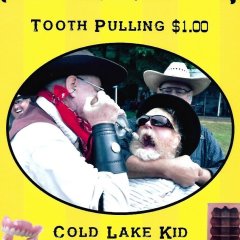
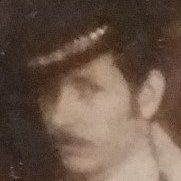
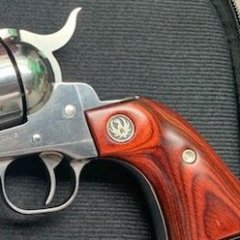
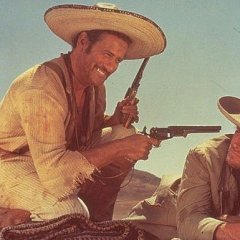

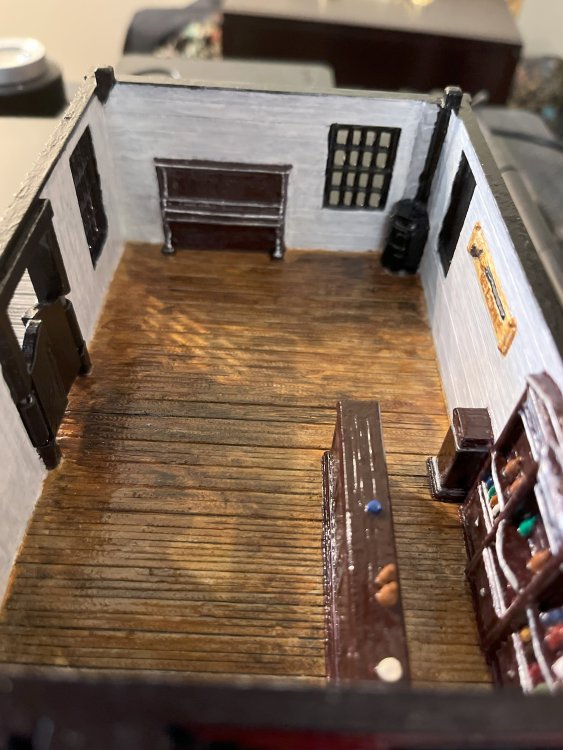
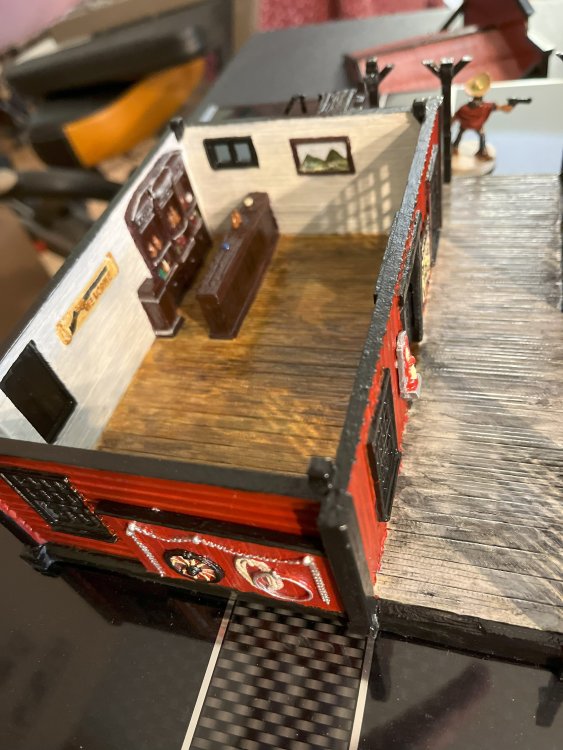
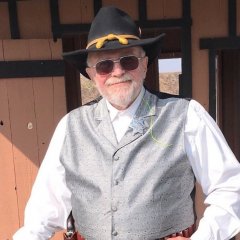
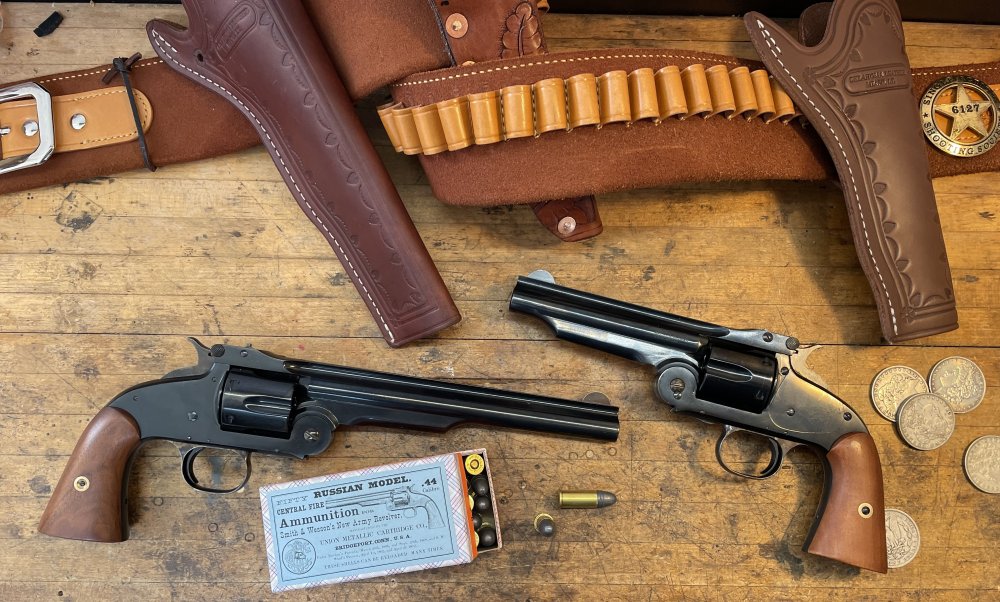
_02-781336.thumb.jpg.f4a75bbb74124e28370c8d589db5938f.jpg)


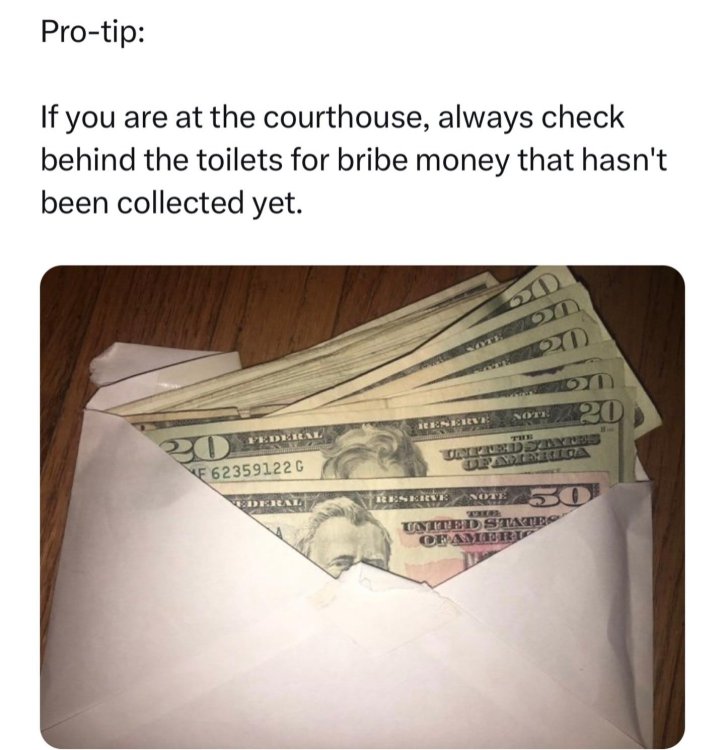


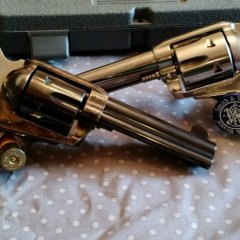

.jpg.9e1fc25c5eeef82c3276e868aa5a55c5.jpg)
